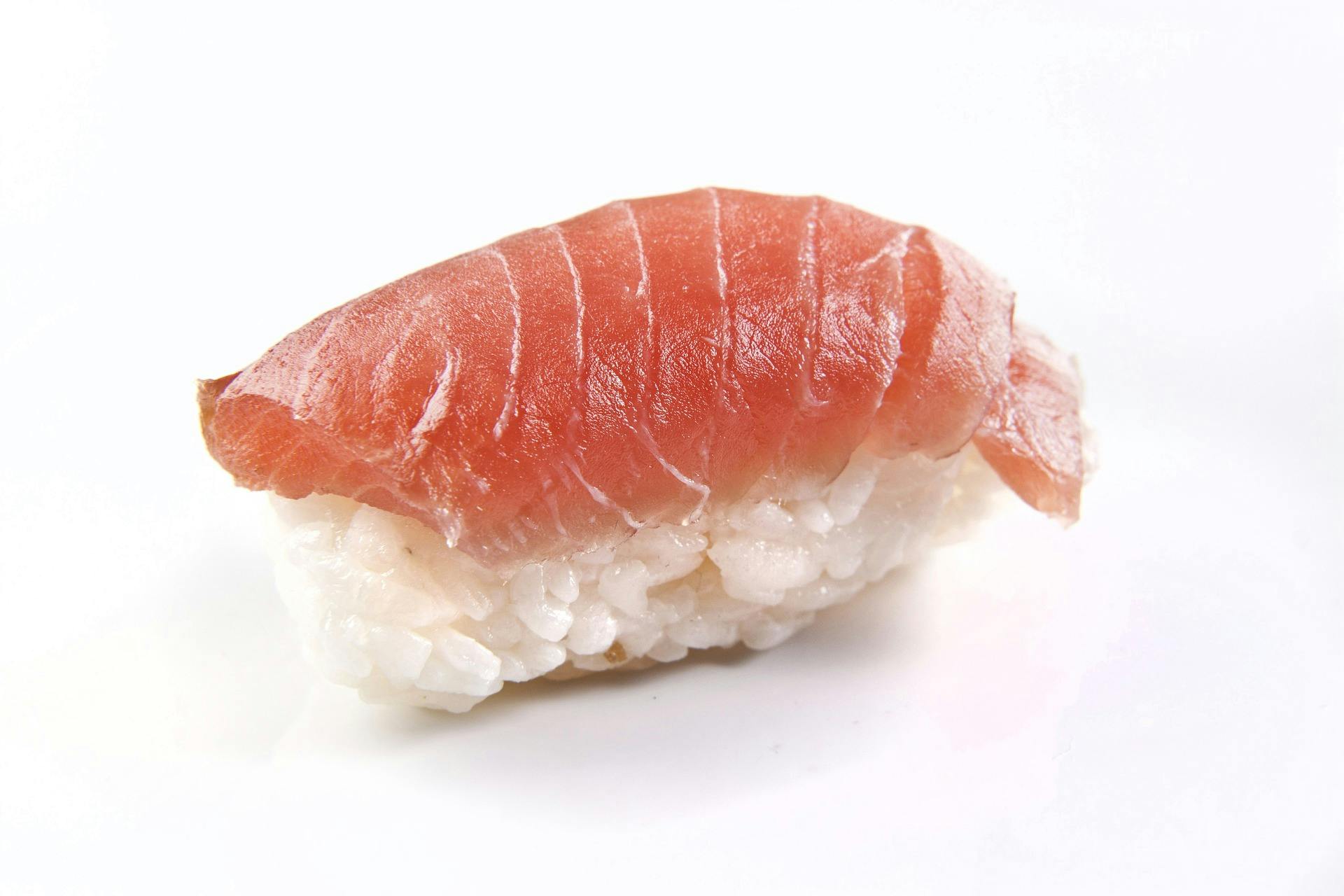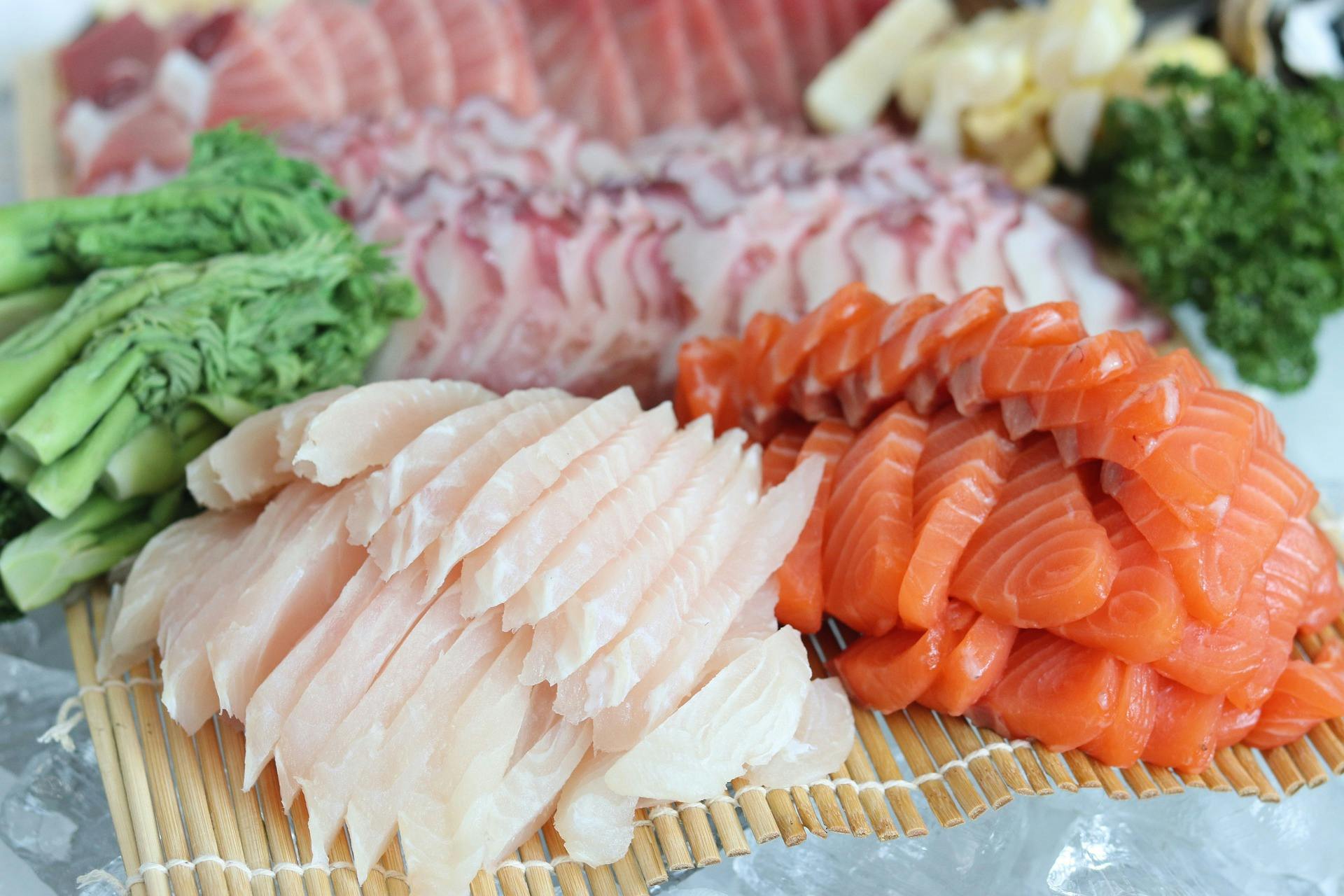nigiri vs sashimi
What is the difference?
- sushi may be the ultimate in sophisticated grab-and-go lunches, but making your own nigiri is surprisingly simple
- tuna sashimi
nigiri vs sashimi
What is the difference between nigiri and sashimi? Well, they are both staples of Japanese cuisine and arguably delicious if you like East Asian food, but they each have distinct methods of preparation and slightly different ingredients. Want to find out more? Carry on reading.
1. nigiri
noun
Nigiri is a type of sushi found in most Japanese and Asian-inspired restaurants. Its main ingredient is Japanese rice, which is then topped with various ingredients like raw fish. The cooked rice is mixed with vinegar, sugar, and salt when it is still warm to give it the most flavor. Nigiri sushi is small and designed to be eaten in one bite!

Origin of nigiri
Nigiri, or (握り) in Japanese, is a type of sushi that gets its name from how it's prepared and made. Nigiri means to "grasp," which refers to how the rice is carefully formed using one's hands and fingers. Nigiri sushi originated in the Kanto region of Japan in the 1800s. Due to a lack of modern appliances like refrigerators, the raw fish placed on top of the rice would have been preserved and marinated in salt, vinegar, and soy sauce. Properly prepared nigiri can be expensive, so contrary to popular belief, Japanese people usually eat nigiri sushi for celebrations and special meals.
Examples for nigiri
Nigiri sushi is written in Japanese like ( 握り寿司,) or Nigiri (握り).
Common toppings for nigiri sushi include Otoro (大トロ), the fattiest portion of the tuna found on the underside of the belly, Akami (赤身), the leaner meat from the sides of the tuna, and Ikura, which are salmon fish eggs.
When you order nigiri sushi in a restaurant, you are most likely to get Akami because it is the cheapest and most readily available topping.
It is considered rude to leave a partially-eaten roll on your plate. So, always try to eat the nigiri sushi in one bite!
Generally, soy sauce isn't added directly to nigiri sushi. Instead, you will get a small side dish or (shoyuzara) to dip your nigiri into.
Despite popular opinion, Japanese people eat nigiri with their hands, especially around traditional people or the elderly. The pickled ginger, however, is always eaten with chopsticks.
2. sashimi
noun
Sashimi isn't actually a type of sushi. It is thinly sliced raw meat served without rice. In most Japanese restaurants, you will see types of tuna, salmon sashimi, and sometimes mackerel, yellowtail, shrimp, or octopus. Sashimi is served raw, so it doesn't require any cooking. Condiments like soy sauce, pickled ginger, and wasabi on the side can complement the raw fish's flavors. Ginger and wasabi, in particular, besides for flavor, some Japanese people believe are useful for killing harmful bacteria that could be in the raw seafood.

Origin of sashimi
Sashimi, or (刺身) in Japanese, is one of the country's most popular dishes. The word sashimi means "pierced body." Sash means “pierced or stabbed,” and “mi” means body or flesh. There are tons of different theories as to where sashimi originated. Some say that it originates from the dish “namasu,” where thinly sliced raw fish is marinated in vinegar, which was popular in the Heian period between the 8th and 12th centuries. However, experts agree that sashimi became more popular in Japan during the Edo or Tokugawa periods between 1600 and 1867 when the Shogunate (military dictatorship) was founded by Tokugawa Ieyasu, otherwise known as Matsudaira Motoyasu.
Examples for sashimi
Americans got their first taste of sashimi in the 1960s when Little Tokyo in Los Angeles opened the country's first sushi restaurant.
Sometimes sashimi is made from meat like chicken or beef. The most common use is marbled Wagyu beef sashimi.
Sashimi is considered a delicacy, but in the U.S., sashimi-graded products aren't regulated.
You can buy special sashimi knives in specialty stores to get the best and thinnest cuts.
Tsukuri is the most popular style of thinly sliced sashimi.
To get even thinner and more transparent cuts, you can use the Usuzukuri method of sashimi preparation.
Takeaways - Tips
Nigiri
Nigiri is a type of sushi. To make nigiri, thinly sliced pieces of raw meat are placed on a pinched piece of vinegary, salted, and sugared sushi rice, and it can be served with different condiments like pickled ginger or soy sauce.
Sashimi
Sashimi isn't a type of sushi, though many people confuse the two. Sashimi is thinly sliced pieces of raw fish or meat served without rice. For chefs preparing sashimi is an art form and requires many years of practice.
Bottom Line
Both are delicious! And when prepared correctly, they can both be tasty in their own right, but they are different. If you want to identify the key differences, nigiri has rice, and sashimi doesn't.
FAQs
When to use nigiri?
When to use sashimi?
How to remember nigiri vs. sashimi?
Commonly Confusing Words
Spell checkers don't always have you covered. Sometimes your word might be spelled correctly, but it could be the wrong word. In English, there are lots of confusing terms that look alike but are spelled differently, and many terms that mean the same thing but are easily misused.
Here are the most commonly confusing word pairings, with definitions and examples of their usage.